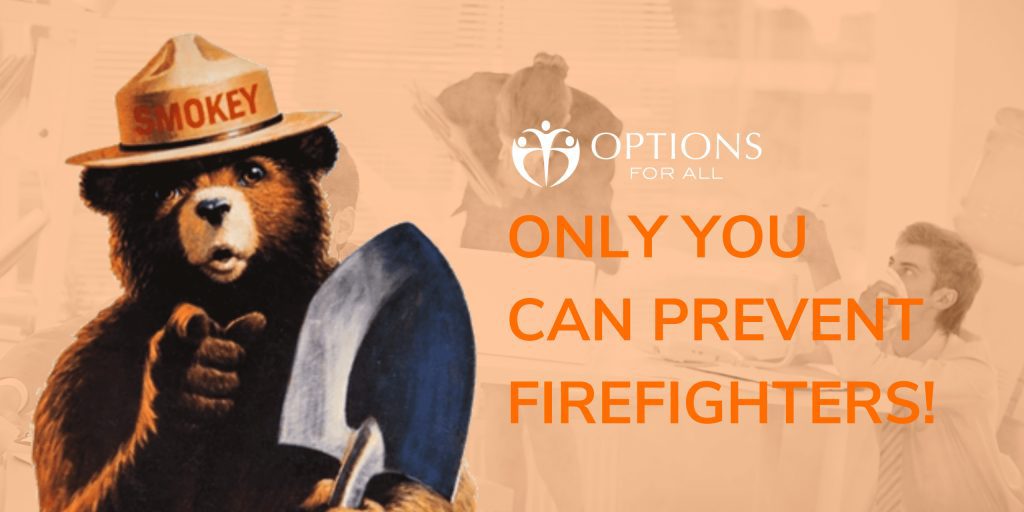
With 22 years in operations, Brian Zotti, Chief Operating Officer of Options For All (OFA), shed some insight into what it means to firefight in the workplace.
Firefighters are generally perceived to be heroic and necessary for safety in our communities. Although this is true for fires threatening our homes, this should not necessarily be the case in the workplace. Not all fires can be avoided, but you can take steps to anticipate them.
Fires in the workplace are unplanned distractions that derail team’s focus from their goals. Ultimately firefighting can be an addiction. This addiction happens because the fire in the workplace allows employees to assert themselves to put them out. Much like our community heroes saving lives, putting out a fire in the workplace makes an employee feel like a hero. Which on its own becomes a problem that is often fanned by the praise of teammates recognizing the support and help provided in putting out nothing more than a distraction.
“What we’re doing is rewarding the act of firefighting instead of anticipating the risks that are likely to impact us,” says Brian.
This continued praise motivates employees to lean in and take action. We seek that recognition from our peers and feel heroic for resolving a distraction. We all know that we view our community firefighters as real heroes because they protect citizens from dangerous fires, not for rescuing stray cats in trees. We should be valuing the prevention of conflicts in the workplace, not putting them out.
Encouraging behaviors that help prevent crises in the workplace enable companies to be better at achieving their goals. Effective organizations align the priorities and tasks of their employees with their strategic goals. Instead of trying to be heroic and dispute the problem in the office, we need to embolden the idea of how we use our time and resist the urge to engage in distractions, and instead reward and praise employees for accomplishing objectives that address organizational goals.
To achieve their goals, organizations must avoid creating a culture of putting out fires. There’s a natural tendency to reward those that “save the day. “And while there is a need to manage risks and issues that arise unexpectedly, these situations must be the exception, not the norm. Ways in which organizations can avoid becoming engulfed in a pattern of putting out fires include empowering employees at all levels to identify and mitigate risks before they become issues. Second, organizations can and should examine problems to determine whether they could’ve been anticipated and how to put proper risk management practices into place in the future. Third, performance and recognition systems should be anchored towards adequate planning, risk management, and execution.
“If someone more senior than you asks you to do something that is not aligned with the organization’s goals, do you have the right to push back?… and my answer is you have every right,” says Brian.
How can you check to see if you’re spending your time advancing the right goals? Take a glimpse at your calendar from last week. What meetings did you have scheduled? Were those meetings aligned with your organization’s goals? Did you spend your time on those goal-advancing meetings? Were there unplanned meetings that you found yourself engaged in? Were those meetings aligned with advancing your organization’s goals? These questions are what you want to ask yourself to create a clear vision and strategy to stay on track. If you stay focused on your goals, fires are less likely to happen in the workplace.
Like Smokey the Bear says – “Only you can prevent wildfires.”





